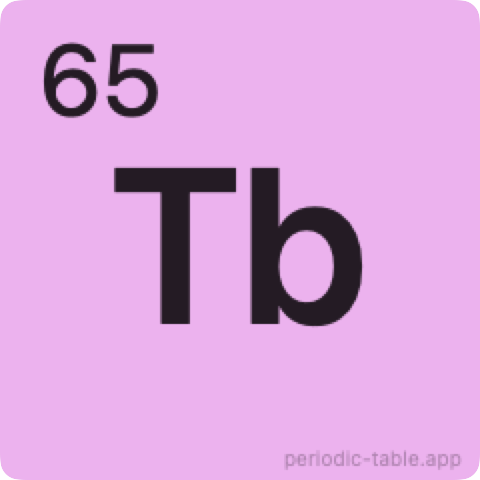This website uses cookies to analyze user experience and ads effectiveness.
We use Google Analytics and Yandex.Metrica to collect anonymous information only if you allow us to do so by clicking "I understand" button.
We use Google Analytics and Yandex.Metrica to collect anonymous information only if you allow us to do so by clicking "I understand" button.
 Terbium
Terbium
 Terbium
TerbiumTerbium is a chemical element from the periodic table. It is a rare earth metal that is silvery-white in color. Terbium is used in various industrial applications, such as the production of magnets and in the manufacture of specialty alloys. It is also used in some scientific research and medical applications.
Download Chemistry application to view more information about the chemical element:
| Atomic number | 65 |
| Group | IB |
| Period | 6 |
| Mass | 158.92535 |
| Latin name | Terbium |
| Electron configuration | [Xe]4f9 6s2 |
| Oxidation state | 0, 1, 2, 3, 4 |